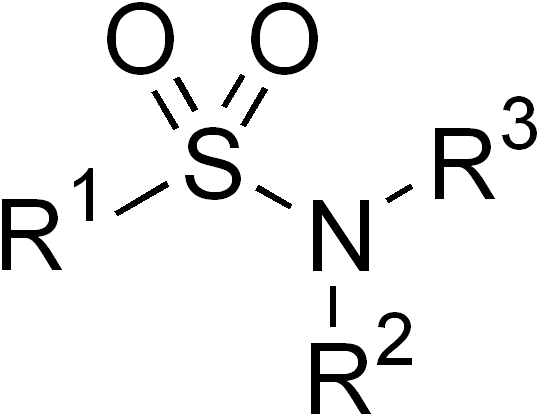|
Detomidine
Detomidine is an imidazole derivative and Alpha-2 adrenergic receptor, α2-adrenergic receptor agonist, used as a large animal sedative, primarily used in horses. It is usually available as the salt (chemistry), salt detomidine hydrochloride. It is a prescription medication available to veterinarians sold under various trade names. Currently, detomidine is licensed for use only in horses in the United States, but it is also licensed for use in cattle in Europe and Australia. Properties Detomidine is a sedative with analgesic properties. α2-adrenergic receptor agonists produce dose-dependent sedative and analgesic effects, mediated by activation of α2 catecholamine receptors, thus inducing a negative feedback response, reducing production of excitatory neurotransmitters. Due to inhibition of the sympathetic nervous system, detomidine also has cardiac and respiratory effects and an antidiuretic action. Effects A profound lethargy and characteristic lowering of the head with re ... [...More Info...] [...Related Items...] OR: [Wikipedia] [Google] [Baidu] [Amazon] |
Alpha-2 Adrenergic Receptor
The alpha-2 (α2) adrenergic receptor (or adrenoceptor) is a G protein-coupled receptor (GPCR) associated with the Gi alpha subunit, Gi heterotrimeric G-protein. It consists of three highly homologous subtypes, including α2A-adrenergic, α2A-, α2B-adrenergic, α2B-, and α2C-adrenergic, α2C-adrenergic. Some species other than humans express a fourth α2D-adrenergic receptor as well. Catecholamines like norepinephrine (noradrenaline) and epinephrine (adrenaline) signal through the α2-adrenergic receptor in the central nervous system, central and peripheral nervous systems. Cellular localization The Alpha-2A adrenergic receptor, α2A adrenergic receptor is localised in the following central nervous system (CNS) structures: * Brainstem (especially the locus coeruleus as presynaptic & somatodendritic autoreceptor ) * Midbrain * Hypothalamus * Olfactory system * Hippocampus * Spinal cord * Cerebral cortex * Cerebellum * Septum Whereas the Alpha-2B adrenergic receptor, α2B adren ... [...More Info...] [...Related Items...] OR: [Wikipedia] [Google] [Baidu] [Amazon] |
Imidazole
Imidazole (ImH) is an organic compound with the formula . It is a white or colourless solid that is soluble in water, producing a mildly alkaline solution. It can be classified as a heterocycle, specifically as a diazole. Many natural products, especially alkaloids, contain the imidazole ring. These imidazoles share the 1,3-C3N2 ring but feature varied substituents. This ring system is present in important biological building blocks, such as histidine and the related hormone histamine. Many drugs contain an imidazole ring, such as certain antifungal drugs, the nitroimidazole series of antibiotics, and the sedative midazolam. When fused to a pyrimidine ring, it forms a purine, which is the most widely occurring nitrogen-containing Heterocyclic compound, heterocycle in nature. The name "imidazole" was coined in 1887 by the German chemist Arthur Rudolf Hantzsch (1857–1935). Structure and properties Imidazole is a planar 5-membered ring, that exists in two equivalent tautomeric f ... [...More Info...] [...Related Items...] OR: [Wikipedia] [Google] [Baidu] [Amazon] |
Sulfonamide (medicine)
Sulfonamide is a functional group (a part of a molecule) that is the basis of several groups of medication, drugs, which are called sulphonamides, sulfa drugs or sulpha drugs. The original antibacterial sulfonamides are synthetic antimicrobial agents that contain the Sulfonamide (chemistry), sulfonamide group. Some sulfonamides are also devoid of antibacterial activity, e.g., the anticonvulsant sultiame. The sulfonylureas and thiazide diuretics are newer drug groups based upon the antibacterial sulfonamides. Drug allergy, Allergies to sulfonamides are common. The overall incidence of adverse drug reactions to sulfa antibiotics is approximately 3%, close to penicillin; hence medications containing sulfonamides are prescribed carefully. Sulfonamide drugs were the first broadly effective antibacterials to be used systemically, and paved the way for the antibiotic revolution in medicine. Function In bacteria, antibacterial sulfonamides act as competitive inhibitors of the enz ... [...More Info...] [...Related Items...] OR: [Wikipedia] [Google] [Baidu] [Amazon] |
Arrhythmogenic
Arrhythmias, also known as cardiac arrhythmias, are irregularities in the heartbeat, including when it is too fast or too slow. Essentially, this is anything but normal sinus rhythm. A resting heart rate that is too fast – above 100 beats per minute in adults – is called tachycardia, and a resting heart rate that is too slow – below 60 beats per minute – is called bradycardia. Some types of arrhythmias have no symptoms. Symptoms, when present, may include palpitations or feeling a pause between heartbeats. In more serious cases, there may be lightheadedness, passing out, shortness of breath, chest pain, or decreased level of consciousness. While most cases of arrhythmia are not serious, some predispose a person to complications such as stroke or heart failure. Others may result in sudden death. Arrhythmias are often categorized into four groups: extra beats, supraventricular tachycardias, ventricular arrhythmias and bradyarrhythmias. Extra beats include premature ... [...More Info...] [...Related Items...] OR: [Wikipedia] [Google] [Baidu] [Amazon] |
Sublingual
Sublingual (List of abbreviations used in medical prescriptions, abbreviated SL), from the Latin for "under the tongue", refers to the pharmacological route of administration by which substances diffuse into the blood through Tissue (biology), tissues under the tongue. Many drugs are absorbed through sublingual administration, including Circulatory system, cardiovascular drugs, steroids, barbiturates, benzodiazepines, opioid analgesics, THC, Cannabidiol, CBD, some proteins and increasingly, vitamins and Dietary mineral, minerals. Principle When a chemical comes in contact with the mucous membrane beneath the tongue, it is absorbed. Because the connective tissue beneath the epithelium contains a profusion of capillaries, the substance then diffuses into them and enters the venous circulation. In contrast, substances absorbed in the intestines are subject to first-pass metabolism in the liver before entering the general circulation. Sublingual administration has certain adva ... [...More Info...] [...Related Items...] OR: [Wikipedia] [Google] [Baidu] [Amazon] |
Intramuscular
Intramuscular injection, often abbreviated IM, is the injection of a substance into a muscle. In medicine, it is one of several methods for parenteral administration of medications. Intramuscular injection may be preferred because muscles have larger and more numerous blood vessels than subcutaneous tissue, leading to faster absorption than subcutaneous or intradermal injections. Medication administered via intramuscular injection is not subject to the first-pass metabolism effect which affects oral medications. Common sites for intramuscular injections include the deltoid muscle of the upper arm and the gluteal muscle of the buttock. In infants, the vastus lateralis muscle of the thigh is commonly used. The injection site must be cleaned before administering the injection, and the injection is then administered in a fast, darting motion to decrease the discomfort to the individual. The volume to be injected in the muscle is usually limited to 2–5 milliliters, depending ... [...More Info...] [...Related Items...] OR: [Wikipedia] [Google] [Baidu] [Amazon] |
Intravenous
Intravenous therapy (abbreviated as IV therapy) is a medical technique that administers fluids, medications and nutrients directly into a person's vein. The intravenous route of administration is commonly used for rehydration or to provide nutrients for those who cannot, or will not—due to reduced mental states or otherwise—consume food or water per os, by mouth. It may also be used to administer pharmaceutical drug, medications or other medical therapy such as blood transfusion, blood products or electrolytes to correct electrolyte imbalances. Attempts at providing intravenous therapy have been recorded as early as the 1400s, but the practice did not become widespread until the 1900s after the development of techniques for safe, effective use. The intravenous route is the fastest way to deliver medications and fluid replacement throughout the body as they are introduced directly into the circulatory system and thus quickly distributed. For this reason, the intravenous route ... [...More Info...] [...Related Items...] OR: [Wikipedia] [Google] [Baidu] [Amazon] |
Anaesthesia
Anesthesia (American English) or anaesthesia (British English) is a state of controlled, temporary loss of sensation or awareness that is induced for medical or veterinary purposes. It may include some or all of analgesia (relief from or prevention of pain), paralysis (muscle relaxation), amnesia (loss of memory), and unconsciousness. An individual under the effects of anesthetic drugs is referred to as being anesthetized. Anesthesia enables the painless performance of procedures that would otherwise require physical restraint in a non-anesthetized individual, or would otherwise be technically unfeasible. Three broad categories of anesthesia exist: * ''General anesthesia'' suppresses central nervous system activity and results in unconsciousness and total lack of Sensation (psychology), sensation, using either injected or inhaled drugs. * ''Sedation'' suppresses the central nervous system to a lesser degree, inhibiting both anxiolysis, anxiety and creation of long-term memory, ... [...More Info...] [...Related Items...] OR: [Wikipedia] [Google] [Baidu] [Amazon] |
Ketamine
Ketamine is a cyclohexanone-derived general anesthetic and NMDA receptor antagonist with analgesic and hallucinogenic properties, used medically for anesthesia, depression, and pain management. Ketamine exists as its S- (esketamine) and R- (arketamine) two enantiomers and has antidepressant action likely involving additional mechanisms than NMDA antagonism. At anesthetic doses, ketamine induces a state of dissociative anesthesia, a trance-like state providing pain relief, sedation, and amnesia. Its distinguishing features as an anesthestic are preserved breathing and airway reflexes, stimulated heart function with increased blood pressure, and moderate bronchodilation. As an anesthetic, it is used especially in trauma, Emergency medical services, emergency, and Pediatrics, pediatric cases. At lower, sub-anesthetic doses, it is used as a treatment for pain and treatment-resistant depression. Ketamine is legally used in medicine but is also tightly controlled due to ... [...More Info...] [...Related Items...] OR: [Wikipedia] [Google] [Baidu] [Amazon] |
Butorphanol
Butorphanol is a morphinan-type synthetic agonist–antagonist opioid analgesic developed by Bristol-Myers. Butorphanol is most closely structurally related to levorphanol. Butorphanol is available as the tartrate salt in injectable, tablet, and intranasal spray formulations. The tablet form is only used in dogs, cats and horses due to low bioavailability in humans. It was patented in 1971 and approved for medical use in 1979. Medical uses The most common indication for butorphanol is management of migraine using the intranasal spray formulation. It may also be used parenterally for management of moderate-to-severe pain, as a supplement for balanced general anesthesia, and management of pain during labor. Butorphanol is also quite effective at reducing post-operative shivering (owing to its kappa agonist activity). Butorphanol is more effective in reducing pain in women than in men. Pharmacology Butorphanol exhibits partial agonist and antagonist activity at the μ-opioid rec ... [...More Info...] [...Related Items...] OR: [Wikipedia] [Google] [Baidu] [Amazon] |
Premedication
Premedication is using medication before some other therapy (usually surgery or chemotherapy) to prepare for that forthcoming therapy. Typical examples include premedicating with a sedative or analgesic before surgery; using prophylactic (preventive) antibiotics before surgery; and using antiemetics or antihistamines before chemotherapy. Premedication before chemotherapy for cancer often consists of drug regimens (usually 2 or more drugs, e.g. dexamethasone, diphenhydramine and omeprazole) given to a patient minutes to hours before the chemotherapy to avert side effects or hypersensitivity reactions (i.e. allergic reactions). Melatonin has been found to be effective as a premedication in both adults and children due to its pharmacological properties of hypnotic, antinociceptive and anticonvulsant which produce effective anxiolysis and sedation. Unlike midazolam, melatonin does not impair psychomotor skills or adversely affect the quality of recovery. It has a faster recovery ... [...More Info...] [...Related Items...] OR: [Wikipedia] [Google] [Baidu] [Amazon] |
Salivation
Saliva (commonly referred as spit or drool) is an extracellular fluid produced and secreted by salivary glands in the mouth. In humans, saliva is around 99% water, plus electrolytes, mucus, white blood cells, epithelial cells (from which DNA can be extracted), enzymes (such as lingual lipase and amylase), and antimicrobial agents (such as secretory IgA, and lysozymes). The enzymes found in saliva are essential in beginning the process of digestion of dietary starches and fats. These enzymes also play a role in breaking down food particles entrapped within dental crevices, thus protecting teeth from bacterial decay. Saliva also performs a lubricating function, wetting food and permitting the initiation of swallowing, and protecting the oral mucosa from drying out. Saliva has specialized purposes for a variety of animal species beyond predigestion. Certain swifts construct nests with their sticky saliva. The foundation of bird's nest soup is an aerodramus nest. Venomous sa ... [...More Info...] [...Related Items...] OR: [Wikipedia] [Google] [Baidu] [Amazon] |





